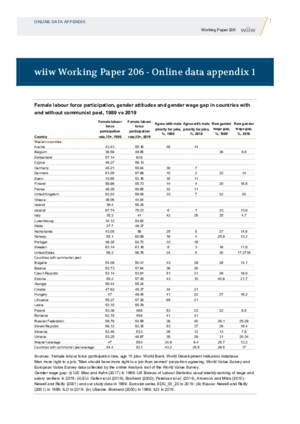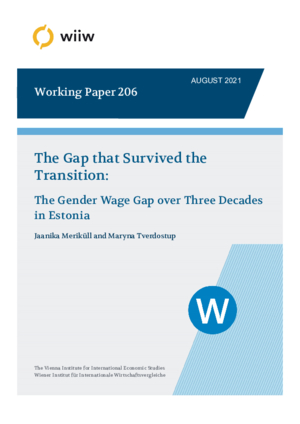The Gap that Survived the Transition: The Gender Wage Gap over Three Decades in Estonia
Jaanika Meriküll and Maryna Tverdostup
wiiw Working Paper No. 206, August 2021
40 pages including 4 Tables and 7 Figures
This paper looks at the gender wage gap throughout the transition from communism to capitalism and throughout a time of rapid economic convergence. The case of Estonia is used, and micro data from the Labour Force Survey from 1989 to 2020 are employed. The communist regimes had highly regulated wage setting and high levels of educational attainment and labour market participation for women. Although the regime was formally egalitarian, the gender attitudes were conservative and the raw gender wage gap was as large as 41% at the end of the communist period in Estonia. The large gender wage gap under communist rule narrowed quickly during the first years of economic transition, but the further decline in the gap has been slow. The paper has two main messages. The first is that there is strong inertia in the gender wage gap persisting through the communist period and economic convergence. None of the known long-run cultural drivers of gender attitudes can explain this. The second is that the decline in the gap is related to the overall decline in wage inequality, the rise in minimum wages, and more egalitarian gender attitudes. The gender attitudes are responsible for a smaller effect than wage inequality is.

wiiw Working Paper 206 - Online Data Appendix 1
Female labour force participation, gender attitudes and gender wage gap in countries with and without communist past, 1989 vs 2019.
free download
Keywords: gender wage gap, wage distribution, decomposition, post-communist economies, wage inequality, minimum wages, gender attitudes
JEL classification: J31, J71, P23
Countries covered: Estonia
Research Areas: Labour, Migration and Income Distribution
